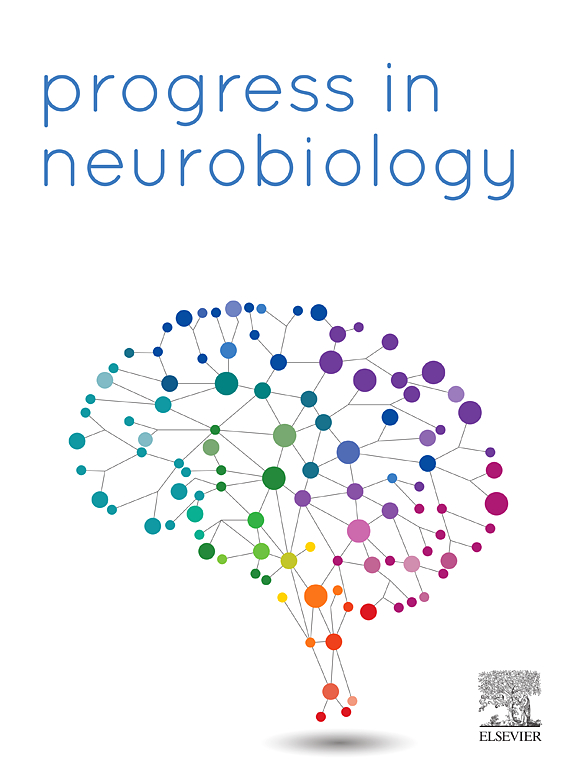小鼠时间关联记忆海马再激活动力学。
IF 6.1
2区 医学
Q1 NEUROSCIENCES
引用次数: 0
摘要
再激活是指在信息编码过程中活跃的神经元群活动的重新出现。海马CA1神经元群产生的放电活动编码时间间隔事件之间的时间关联。然而,与时间关联记忆相关的CA1神经元群是否以及如何在睡眠中重新激活,以及它们在时间关联记忆巩固中的作用仍不清楚。我们利用多个单元记录来监测小鼠学习微量眨眼条件反射(tEBC)任务时CA1神经元的活动,在tEBC任务中,条件刺激(CS,闪光)的呈现与非条件刺激(US,角膜泡)的呈现间隔一段时间。我们发现CS-US配对训练小鼠在初始学习阶段(ILS)表现出很少的条件反射性眨眼反应(CRs),而在良好学习阶段(WLS)表现出渐近水平的条件反射性眨眼反应。在CS- us配对训练小鼠中,超过三分之一的CA1锥体细胞(PYR)表现出CS诱发的放电活动,从CS到时间间隔持续。cs诱发的PYR放电活动是获得tEBC所必需的,并且在cr发生时更强。有趣的是,cs诱发的PYR群重新激活,与训练后睡眠中海马波纹的增加相吻合。cs诱发的PYR群的再激活在学习阶段逐渐减弱,在ILS阶段强度更大。破坏波纹相关的PYR活性会损害cs诱发的PYR发射合体的再激活和tEBC的巩固。我们的研究结果强调了睡眠期间海马CA1神经元集合再激活的特征,这支持了时间关联记忆的巩固。本文章由计算机程序翻译,如有差异,请以英文原文为准。
Dynamics of hippocampal reactivation for temporal association memory in mice
Reactivation refers to the re-emergence of activity in neuronal ensembles that were active during information encoding. Hippocampal CA1 neuronal ensembles generate firing activities that encode the temporal association among time-separated events. However, whether and how temporal association memory-related CA1 neuronal ensembles reactivate during sleep and their role in temporal association memory consolidation remain unclear. We utilized multiple unit recordings to monitor CA1 neuronal activity in mice learning a trace eyeblink conditioning (tEBC) task, in which presentation of the conditioned stimulus (CS, a light flash) was paired with presentation of the unconditioned stimulus (US, corneal puff) by a time-separated interval. We found that the CS-US paired training mice exhibited few conditioned eyeblink responses (CRs) at the initial-learning stage (ILS) and an asymptotic level of CRs at the well-learning stage (WLS). More than one third of CA1 pyramidal cells (PYR) in the CS-US paired training mice manifested a CS-evoked firing activity that was sustained from the CS to time-separated interval. The CS-evoked PYR firing activity was required for the tEBC acquisition and was greater when the CRs occurred. Intriguingly, the CS-evoked firing PYR ensembles reactivated, which coincided with increased hippocampal ripples during post-training sleep. The reactivation of CS-evoked firing PYR ensembles diminished across learning stages, with greater strength in the ILS. Disrupting the ripple-associated PYR activity impaired both the reactivation of CS-evoked firing PYR ensembles and tEBC consolidation. Our findings highlight the features of hippocampal CA1 neuronal ensemble reactivation during sleep, which support the consolidation of temporal association memory.
求助全文
通过发布文献求助,成功后即可免费获取论文全文。
去求助
来源期刊

Progress in Neurobiology
医学-神经科学
CiteScore
12.80
自引率
1.50%
发文量
107
审稿时长
33 days
期刊介绍:
Progress in Neurobiology is an international journal that publishes groundbreaking original research, comprehensive review articles and opinion pieces written by leading researchers. The journal welcomes contributions from the broad field of neuroscience that apply neurophysiological, biochemical, pharmacological, molecular biological, anatomical, computational and behavioral analyses to problems of molecular, cellular, developmental, systems, and clinical neuroscience.
 求助内容:
求助内容: 应助结果提醒方式:
应助结果提醒方式:


